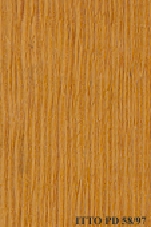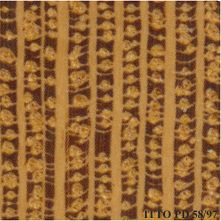
CARALLIA (Carallia brachiata)
Trade Name
Carallia
Scientific Name
Carallia brachiata (Lour.) Merr.
Family
RHIZOPHORACEAE
Common Names
Meransi (Malaysia); Bara (Indonesia); Mani-awga (Myanmar); Rabong (Sarawak); Karalli (Indonesia); Sepat (Indonesia); Katolit (Philippines); Anosep (Philippines); Chiangprar (Thailand); Bakawan-gubat (Philippines); Carallia wood (India); Meransi (Brunei Darussalam); Tra meng (Cambodia); Rapidah (Sarawak); Maniawga-yat (Myanmar); Ma max (Vietnam); Chiang phra (Thailand); Koueum (Laos); Sabar buku (Brunei Darussalam); Nang ae (Thailand); Sendow (Vietnam); Sawng mar (Vietnam); Mesinga (Malaysia); Ringgit dareh (Indonesia); Bong nang (Laos); Halay (Laos); Kitamiyang (Indonesia)
Scientific Name Synonyms
Petalotoma brachiata (Lour.) DC.; Eugenia cupulifera H. Perrier; Diatoma brachiata Lour.; Carallia madagascariensis (DC.) Tul.; Carallia lucida Roxb.; Carallia integerrima DC.; Barraldeia madagascariensis DC.
Description Of The Tree
Botanical Description
It is a medium-sized to large tree up to 35 m tall, 70 cm diameter, sometimes buttressed and sometimes with stilt-roots.
Natural Habitat
It grows in primary and secondary forests, in lowlands up to 1,800 m of altitude, and on the margins of freshwater swamp forests.
Wood Identification
Anatomic Description Of Wood
Wood diffuse porous. Occasionally tangential diameter of vessel lumina 200 micras or more. Tyloses common. Occasionally vessels per mm2 less than 6. Simple perforation plates. Vessel-ray pits similar to intervessel pits in size and shape. Intervessel pits mediu Occasionally apotracheal axial parenchyma diffuse and/or diffuse in aggregates. Occasionally axial parenchyma aliform. Occasionally axial parenchyma confluent. Occasionally prismatic crystals in chambered axial parenchyma cells and/or in fibers. Over 9 cells 4 to 10 rays per mm (medium). Rays of two distinct sizes. Ray height more than 1 mm. Larger rays more than 4 seriate. Occasionally sheath cells. Prismatic crystals in radial alignment in procumbent ray cells (chambered cells). Body ray cells procumbent with ove Fibers very thick walled. Fibers with distinctly bordered pits.
-
 Wood Macro Photo Radial Plane
Wood Macro Photo Radial Plane
-
 Wood Micro Photo Of Transversal Section
Wood Micro Photo Of Transversal Section
Availability
Cites Status
Unrestricted
General Wood Description
Color
The sapwood is not clearly differentiated and it is usually light yellowish orange. The heartwood is reddish brown with orange luster.
COLOR INDEX (1=Black, 7=Light yellow,white)
5
Grain
It is generally straight, occasionally interlocked.
Texture
The texture is medium to coarse. Its vessels contain white deposits.
Luster
This timber is high in luster.
Natural Durability
It is moderately durable. Rapid attack by insects and decay organisms is possible if not prevented.
Natural durability index (1= Very high durability, 7=Vey low durability)
3
Resistance To Impregnation
This species is moderately resistant to preservative treatment.
Wood Physical Properties
Basic Density or Specific Gravity (O.D. weight/vol. green) (g/cm³)
0.64
Air-dry Density (Weight and volume at 12%MC) (g/cm³)
0.71
Total shrinkage Tangential (Saturated to 0%MC) (%)
6.8
Total shrinkage Radial (Saturated to 0%MC) (%)
1.4
Drying Defects
Ease of Drying: Air seasoning of Rengas is reported to be good with little degrade. Boards 15 mm thick require 2-3 months to air dry. Drying Defects: Only slight twisting, springing and insect attack have been observed during drying.
Dimensional stability ratio (Total Tangential Shrinkage %/Total Radial Shrinkage %)
4.9
Wood Chemical Properties
Wood Mechanical Properties
Bending Strength (MOR),12%MC (kgf/cm²)
1138
Stiffness (MOE) 12%MC (kgf/cm²)
139399
Compression parallel to fiber 12%MC (kgf/cm²)
564
Shear strength radial 12%MC (kgf/cm²)
112
Janka hardness (side) 12%MC (kgf)
690
Workability
Sawing
This species is easy to saw.
Rotary Veneer Cutting
Lamination of this species is possible.
Sliced Veneer
Lamination of this species is possible.
Machining
This species is easy to machine.
Planing
Planing is reported to be easy.
Nailing
This species is reported to have a good nailing behavior.
Gluing
It is reported to be easy to glue.
Finishing
Filling is necessary to get a good finish.
REFERENCED USES
End Uses Summary
EXTERIOR GENERAL, stakes posts, rails, crossties, piers, HOUSING GENERAL, flooring, parquet, panelling, FURNITURE AND CABINETS, PLYWOOD AND VENEER, Decorative veneer, TOOLS, tool handles, agricultural tools, PACKING, pallets, CONTAINERS, OTHER AND MUSICAL INSTRUMENTS, moldings
Exterior General
- 1 - Tabela de resultados de ensaios fisicos e mecanicos
Stake Posts
- 5 - Propriedades fisicas e mecanicas da madeira e do contraplacado de Pinus elliottii
Rails
- 6 - Physical and mechanical properties of Eucalyptus deglupta Blume grown in Costa Rica
Crossties
- 8 - Maderas latinoamericas. III, Podocarpus standleyi ,Podocarpus oleifolius, Drims granadensis, Magnolia poasana y Didymopanax pittieri
Piers
- 9 - Maderas latinoamericanas. IV, Nectandra sp. Ocotea austinii, Persea sp. aff. vesticula, Persea schiedeana
General Housing
- 10 - Silica in Timbers
Flooring
- 14 - Handbook of Hardwoods
Parquet
- 15 - Empire Timbers
Paneling
- 18 - W3TROPICOS Missouri Botanical Garden
Furniture Cabinets
- 21 - Tropical timbers of the world. Part III-Southeast Asian and Oceanian Species.
Panels, Veneers
- 25 - Directory of Timber Trade Malaysia
Decorative veneer
- 28 - Ministry of Agriculture, Fisheries & Forest of Fiji
Tools
- 42 - Utilización Industrial de Nuevas Especies Forestales en el Perú.
Tool Handles
- 43 - Maderas de Bolivia (Características y Usos de 55 Maderas Tropicales)
Agricultural Tools
- 44 - Atlas of Peruvian Woods
Packing
- 45 - Recopilación y Análisis de Estudios Tecnológicos de Maderas Peruanas
Pallets
- 48 - The strength properties of timbers
Containers
- 50 - Properties of imported tropical woods
Other & Musical Instruments
- 63 - Madeiras do Brazil II
Molding
- 79 - Padronização da Nomenclatura Comercial Brasileira das Madeiras Tropicais Amazônicas, Sugestão
Please Provide Information To View Producer Information